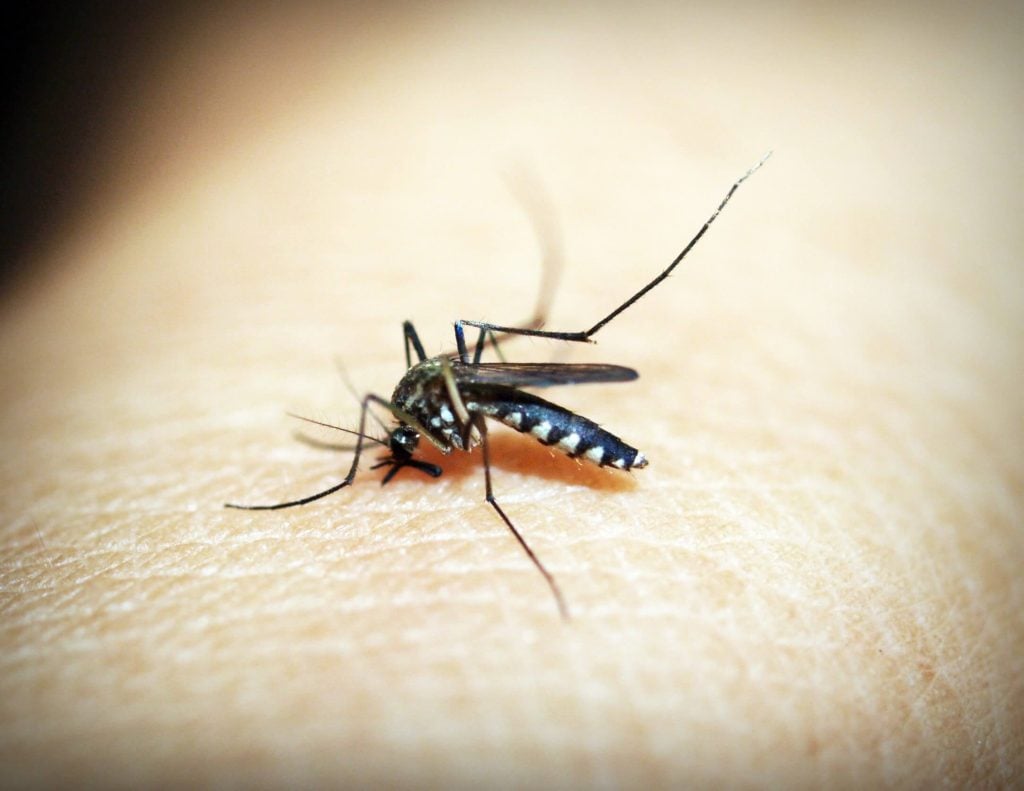Bugs Off! Ways to Prevent and Treat Those Pesky Insect Bites
Consider the Odds
- At least 80% of all animals on earth are insects—more than 900,000 species identified so far. By taxonomic classification, insects have six wings, three body sections (no spine), wings, antennae, and multi-faceted eyes. Included are ants, bees, beetles, butterflies, cicadas, cockroaches, crickets, dragonflies, fleas, flies, grasshoppers, lightning bugs, mosquitos, moths, termites, and wasps.
- Then, there are arachnids—eight legs, two spineless body sections, multi-faceted eyes, no wings or antennae, and 100,000 species of harvestmen, mites, scorpions, spiders, and ticks.
To us humans, they’re all just bugs. And some of those bugs are intent on turning us into a meal.
In most cases, the bites, blotches, jabs, pokes, punches, slashes, and stings inflicted by a vast array of pests are annoying but not harmful. (Only 1% to 3% of insect species are hurtful to humans, animals, or plants.) Plus, as intelligent beings, we can fight back.
How to Stop Bites Before They Happen
A bug bites by making a hole in your skin to feed on your blood; in the process, it releases saliva. A sting involves penetrating your skin with a stinger, usually as a defense. Antibodies in your immune system detect the saliva or venom and release a histamine compound to counteract the injury; wound-repairing white blood cells then flood the area, causing inflammation, swelling, and itch. The severity of your reaction depends on your sensitivity and the type of bug involved. For most of us, encounters with mosquitoes (3,500 different types worldwide, but only 6% bite humans and only females bite), bees, ticks, and spiders are of primary concern.
Two primary precautions help avoid the majority of bites and stings.
Use insect repellent.
For maximum protection, choose a product that contains 20 to 30% of either DEET or picaridin—they’re equally effective. Many brands are available commercially, but read labels carefully and follow instructions. Apply sprays to exposed skin and outer clothing; for the face, spray your hand and transfer lotion manually, avoiding your mouth and eyes. Remember the back of your neck and ears. If you’re wearing sunscreen (always wear minimum SPF 30 when outside), put sunscreen on first, let it dry, and then apply repellent on top. Reapply repellent after swimming, sweaty exercise, and on really hot days.
You may be hesitant about using DEET and picaridin; both are synthetic chemical compounds developed specifically as insect repellents. Be assured that these ingredients have been extensively tested scientifically and for most people show no adverse effects. Most importantly, they work.
What about natural substances? Researchers know that different bugs dislike certain fragrances—mosquitoes hate citronella, lemon eucalyptus, basil, and garlic; ants and flies dislike mint, basil, and bay; gnats avoid citronella, lemongrass, and rose geranium; ticks and lice stay away from lemon eucalyptus and geranium. Using essential oils and companion ingredients, you can mix a variety of repellents at home. Formulas are available online. But caution is advised because allergic reactions to essential oils are possible and the efficacy of homemade repellents is unverified by the Food and Drug Administration. Doctors and outdoor experts advise that if you are going into an area known to be infested with mosquitoes, ticks, or other bugs, using a commercial chemical repellent is preferable.
Wear appropriate clothing.
What you wear when hiking in a densely wooded area, working in the garden, or going out at night is important to your protection. Cover exposed skin by wearing long-sleeved shirts, long pants, socks, closed shoes (no sandals), and a hat. Pulling your socks up over your pants and tucking in your shirt helps keep bugs out. Pre-treating outer clothing (nothing that goes next to the skin), boots, and tents with permethrin repels or kills mosquitoes and lasts through multiple washings. Follow package directions and allow items two hours to dry before wearing. Or buy goods pre-treated with permethrin at your camping outfitter. When sleeping outside, hang netting that reaches the floor over your bed. Don’t use perfumes or scented soaps, shampoos, and deodorants—they attract bugs. Avoid standing water and clear foodstuffs away.
Some people get a bit more often than others, for reasons that are not entirely understood. Each of us has a distinctive odor made up of a mix of chemical compounds; sometimes that draws bugs in. Mosquitoes seem to gravitate toward people with Type O blood, while carbon dioxide in our personal breathing signatures attracts multiple types of pests. Masking the smell of skin with repellents is one way of discouraging insects, and a fan is effective at blowing them away.
How to Treat Bites When They Occur
Despite our best efforts, sooner or later we’ll get bit, especially in summer when bugs are most active. Despite the annoying bumps, lumps, itching, redness, and swelling, most bites and stings are mild, can be treated at home, and clear up within a few days.
For mild reactions.
First, move to a safe place to avoid further contact. Next, gently wash the affected area with soap and cool water, then apply an ice-filled cloth for 20 minutes to reduce swelling and pain. Baking soda mixed with enough water to create a paste helps reduce bite response, as does daubing with apple cider vinegar, rubbing alcohol, or hydrogen peroxide; these counteract the saliva and venom injected into your skin and act as a cleansing disinfectant. Store-bought calamine lotion, hydrocortisone cream, or oral antihistamine help too. Whatever your remedy, apply it several times a day until symptoms go away. Also handy—an over-the-counter pain reliever like acetaminophen or ibuprofen to alleviate discomfort.
And despite the temptation, please don’t scratch. Infection and scarring can result.
Different symptoms for different bites.
Not all bites are created equal, so figuring out exactly what jabbed you can be helpful in understanding how you react. (Go online for full-color, close-up depictions of more bugs and bites than you’ll ever want to see.) For example, mosquitoes, midges, and gnats raise itchy lumps, while fleas leave behind red lines or clusters, chiggers produce an intense rash, and horseflies actually cut the skin. Wasp and hornets cause sharp pain on contact, and bees deposit a stinger and venomous sac. These need to be promptly removed by scraping with a hard edge like a bank card. But don’t use tweezers or squeeze; that only spreads the gunk.
That’s just the insects. On the arachnid side, spiders create painful, red puncture marks, and mites generate blisters. Ticks are a special case because they can stay on the skin and continue feeding for a week or more (yuck!). Coming in from the woods, tall grass, or yard, shower promptly, then check yourself. If a tick is attached, remove it immediately with tweezers by grasping and pulling upward with steady, even pressure. Once removed, clean the bite area and your hands with rubbing alcohol or soap and water and dispatch the tick in alcohol or bleach. Because ticks can be infected with bacteria, viruses, or parasites and spread potentially deadly illnesses like Lyme disease, Rocky Mountain spotted fever, tularemia, and more, they should always be taken seriously.
Likewise with mosquitoes. Infected mosquitoes carry Zika virus, West Nile virus, Chikungunya virus, dengue, yellow fever, and malaria. While these diseases are not common in the U.S., they can be contracted while traveling abroad, brought home, and spread. Particularly worrisome is local-origin malaria, which appeared in several southern states during the summer of 2023.
When to Seek Emergency Care
Although rare, serious reactions to bites and stings do happen. Get medical assistance immediately if any of these signs appear:
- Trouble breathing
- Extensive bite marks, blistering, or the appearance of pus
- Swelling of lips, mouth, face, eyelids, or throat
- Difficulty swallowing
- Dizziness, fainting, unconsciousness
- Rapid heart rate or weak pulse
- Hives
- Nausea, vomiting, diarrhea
- Confusion, anxiety, or agitation
While waiting for EMS or during transport to an emergency facility, cover the victim with a blanket, loosen tight clothing, don’t give liquids, and position to prevent choking on vomit.
Anaphylaxis is a potentially life-threatening allergic reaction, often to bee, wasp, or hornet stings. People aware of their extreme susceptibility should carry an epinephrine autoinjector (EpiPen, Auvi-Q, Adrenaclick) for immediate injection of medication. Time is of the essence with anaphylaxis—get the victim medical help, fast!
Also see your doctor if flu-like symptoms, fever, headache, joint pain, or swollen lymph nodes appear and persist. These may indicate the presence of infection, Lyme disease, Zika virus, or other serious, bug-borne illness. Treatment with antibiotics may be required.
To be sure, there are all kinds of buzzing biters and scary creepy crawlies lurking out there. But with upfront precautions and knowing what to do when bugs attack, the outdoors and summertime are yours to enjoy. Have fun!



